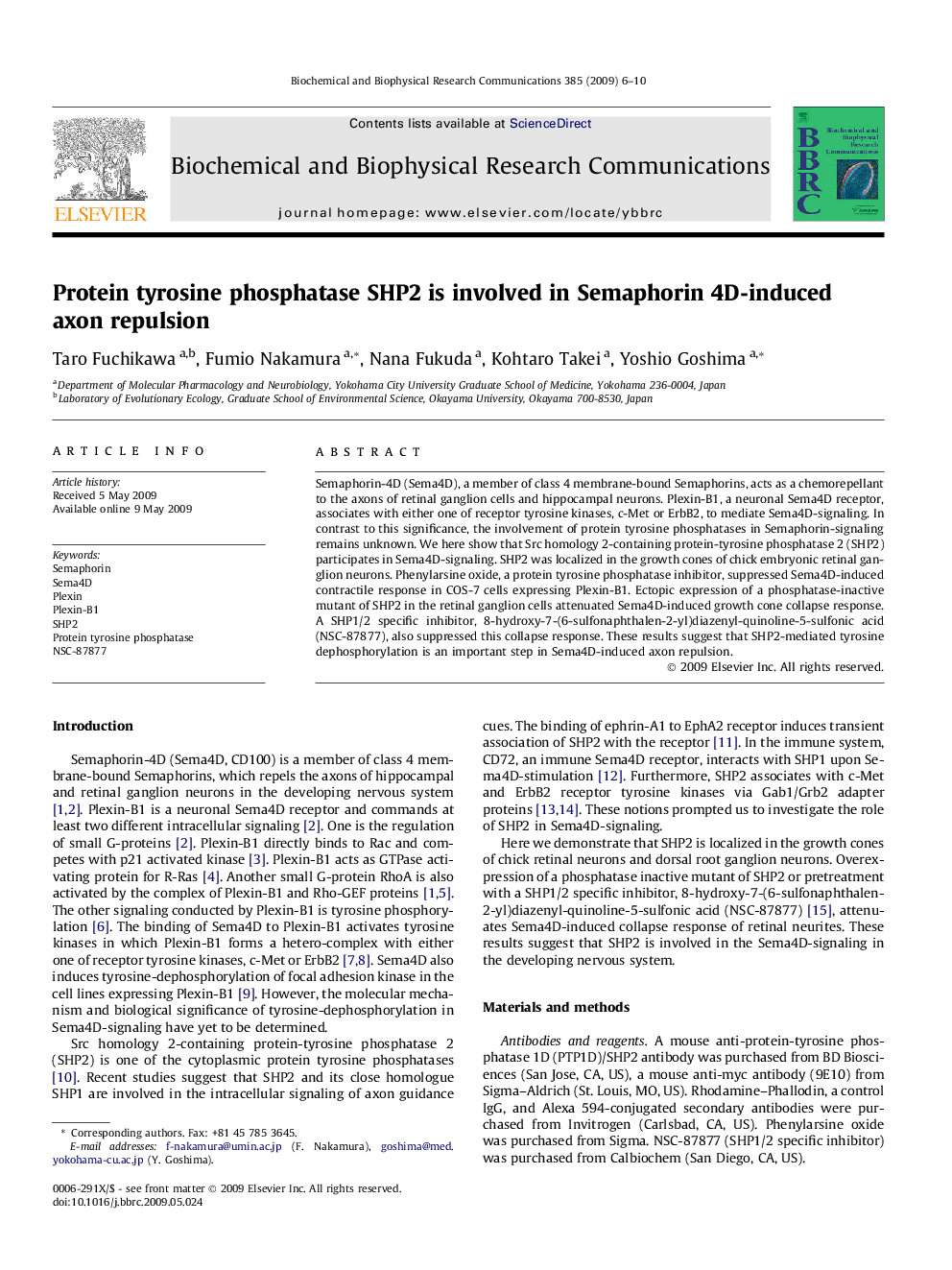| Article ID | Journal | Published Year | Pages | File Type |
|---|---|---|---|---|
| 1933080 | Biochemical and Biophysical Research Communications | 2009 | 5 Pages |
Semaphorin-4D (Sema4D), a member of class 4 membrane-bound Semaphorins, acts as a chemorepellant to the axons of retinal ganglion cells and hippocampal neurons. Plexin-B1, a neuronal Sema4D receptor, associates with either one of receptor tyrosine kinases, c-Met or ErbB2, to mediate Sema4D-signaling. In contrast to this significance, the involvement of protein tyrosine phosphatases in Semaphorin-signaling remains unknown. We here show that Src homology 2-containing protein-tyrosine phosphatase 2 (SHP2) participates in Sema4D-signaling. SHP2 was localized in the growth cones of chick embryonic retinal ganglion neurons. Phenylarsine oxide, a protein tyrosine phosphatase inhibitor, suppressed Sema4D-induced contractile response in COS-7 cells expressing Plexin-B1. Ectopic expression of a phosphatase-inactive mutant of SHP2 in the retinal ganglion cells attenuated Sema4D-induced growth cone collapse response. A SHP1/2 specific inhibitor, 8-hydroxy-7-(6-sulfonaphthalen-2-yl)diazenyl-quinoline-5-sulfonic acid (NSC-87877), also suppressed this collapse response. These results suggest that SHP2-mediated tyrosine dephosphorylation is an important step in Sema4D-induced axon repulsion.
